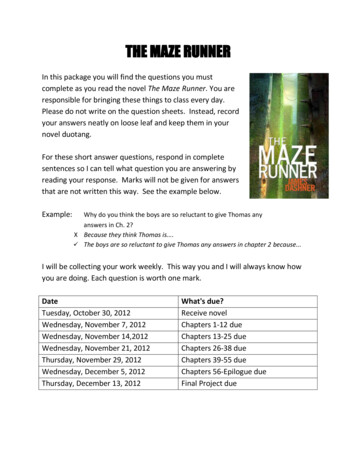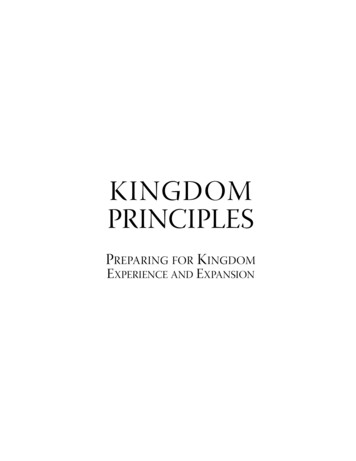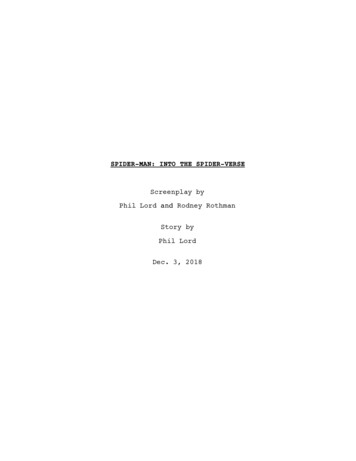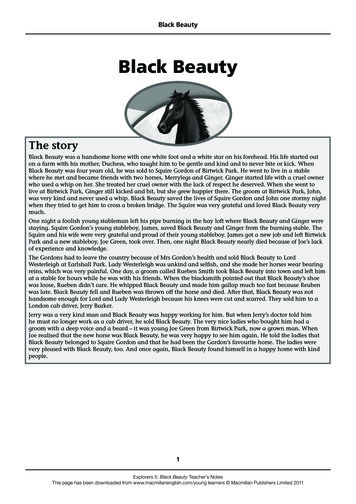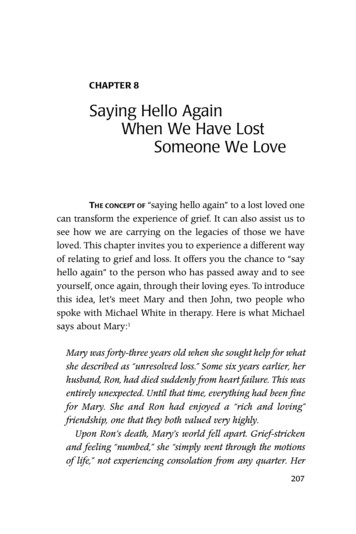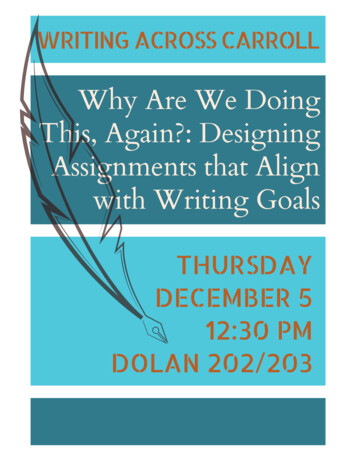
Transcription
WRITING ACROSS CARROLLWhy Are We DoingThis, Again?: DesigningAssignments that Alignwith Writing GoalsTHURSDAYDECEMBER 512:30 PMDOLAN 202/203
1 The Essentials of anEffective WritingAssignmentknow that good writing assignments result in good writing. I've seenthe ways that writers-me, my col1eagues, my classmates, the studentswhom I've taught-write stronger, more sophisticated papers whenthey are asked to respond to well-developed writing assignments.When I first started teaching business writing, for instance, I triedthe very basic assignments included in many of the texts I had reviewed.These assignments were often totally bare-bones: "Write a fund-raisingletter" or "Write a bad-news memo." Totally bare-bones-and totallyineffective. Neither of these prompts gives students the support andinformation they need to successfully complete the writing task. Suchassignments are not limited to the business writing classroom of course.In a language arts or composition classroom, they take the form ofprompts such as "Write a persuasive essay" or "Write an analysis of thenoveL" When I presented students with such stripped-down assign ments, they typically wrote extremely general responses with unclearpurposes and audiences. Compare these generic prompts with the fol lowing assignment:IThere has been a problem in Montgomery County Schoolswith discipline and violence. On the basis of the positiveexamples that they have seen at other Virginia schools, Fami lies for Safe Schools, a local community group, is calling forthe school board to adopt a school uniform policy in orderto cut down on these problems. What is your position onthis issue? Write a letter to the editor of a local newspaperor the school newspaper, stating your position on this issueand supporting it with convincing reasons. Turn in two cop ies of your letter and an envelope addressed to the newspa per (I'll provide the stamp). I'll grade one copy and sendthe other copy off to the newspaper.When I used this assignment-one that offers considerable support anddetail-students responded with stronger writing. I quickly learned that
2Chapter 1the more detail and attention I put into the writing assignments, thebetter students' writing was.It's not that I was just lucky. Research tells us that student suc cess in the writing classroom is directly related to the support and di rection provided in the assignments. Barbara A. Storms, AnastasiaRiazantseva, and Claudia Gentile analyzed the writing that studentscompleted for the 1998 National Assessment for Educational Progress(NAEP) Special Study on Classroom Writing for a 2000 NAEP lETS re port. This examination, as reported in California English, began with thefollowing observation: liThe students had obviously spent class peri ods working on the assignment. The topics were very similar, yet theresults very different. In both classes, students had written drafts, talkedwith other students and I or the teacher about their writing, then rewrit ten their pieces to a 'final' product. Yet one set of papers was lively andwell written; the kind of papers where readers wondered what wouldcome next and were disappointed when the last paper in the set hadbeen read. The other class's papers were predictable, each one sound ing similar to the next. What made the written products differ sogreatly?" (26).The critical difference was the writing assignments. Storms,Riazantseva, and Gentile found that writing assignments that offeredstudents the chance to engage with the available information on a topicand then make their own analyses, reflections, observations, or synthe ses resulted in stronger writing. In addition to the importance of thecontent of the assignment, they found that "stronger pieces resultedwhen writing was a genuine act of communication" (26). As they closetheir discussion of the study, the researchers state that "qualities ofwriting assignments strongly influenced the writing outcomes" (27).A 2001 NAEP INational Writing Project study drew similar con clusions about the relationship between writing assignments and thesuccess of student writers. The study looked at writing assignments andthe related writing that students composed, as well as at interview tran scripts of both students and teachers reflecting on the assignments. Asecond, related study analyzed the writing assignments that led to thestrongest student writing. The study found that the most effective writ ing assignments paid attention to these essential characteristics: The content and scope asked students to focus on critical think ing, rather than reiteration, by interacting with a text. The organization and development provided scaffolding that sup ported students' writing process.
The Essentials of an Effective Writing Assignment The audience for the assignment focused on communication withan authentic group of readers regarding a topic on which thewriter was an expert. A range of choices for students' focus was balanced with sup port and direction so that students could engage in the processas equal partners, rather than be directed to complete teacher driven tasks. (Peterson)The report stresses that "these characteristics of strong assignments cannot [sic] be seen in isolation; they are interconnected." In other words,an effective writing assignment must include all of these componentsin an integrated and relevant way.For students to succeed, research and, often, our own experiencetell us that the writing assignments we create must fulfill all these re quirements. The essential elements of an effective writing assignmentmay seem quite obvious. Students should be asked to engage in higher level writing that focuses on interpretation, analysis, and synthesis. Theyshould be given support that encourages a multidraft composing pro cess. Students should be experts on the topics that they write about, andthey should be asked to engage with a group of real, known readers.Students should be able to choose from several options for each project.Even students tell us that they need writing tasks that fit thesecriteria. The problem is that often we don't hear them. Look at the typi cal resources on designing writing assignments that are widely avail able online and in various articles and books. Without too much search ing, you'll find assertions such as this one, from Northern IllinoisUniversity's Writing Across the Curriculum program: "Students oftencomplain that they don't know what the teacher wants. Even thoughwe may be quite explicit in describing the writing assignment, studentswill tend to forget details unless the assignment is in print." The solu tion, according to this site, is to provide students with an assignmentsheet that explains such details as the kind of writing required, its scopeand length, the formatting requirements, and the due dates. Even whenwe provide these details, however, "students may still claim that theydon't know what the teacher wants"; this resource suggests that teach ers provide additional support materials to help avoid students' com plaints.Students do complain-I've certainly heard my share of studentdissatisfaction. It's not surprising that teachers get frustrated when we'reasked to explain an activity for the umpteenth time. Comments like thesefrom Northern Illinois University's website feel natural, perhaps evenjustified. Yet, the language also reveals what can go wrong when wepresent assignments to students.
4Chapter 1The language introducing these tips and heuristics blames thestudents-rhetorically, the readers of these assignments-for problemsin the composition classroom: Students complain. Students forget. Stu dents claim they don't know what we want. This kind of language placesstudents very obviously at fault. Teachers, it seems, or the writing as signments themselves, are blameless.Yet in these same classrooms, we urge students to analyze theiraudience and provide enough details for their readers to understandthe messages in their texts. We urge them to accept that readers cannotguess what an author means, so writers must work diligently to com municate clearly. Our own knowledge of the composition process, inother words, should lead us to fit our writing assignments to the spe cific group of readers in the classroom-to fit the message to the audi ence's needs.The research by Storms, Riazantseva, and Gentile as well as thefindings of the 2001 NAEP I National Writing Project study indicate thatwriting assignments need to contain adequate detail for students tounderstand and accomplish the writing task. We need to match thewriting assignments we give students with their needs as developingwriters. Unfortunately, there is frequently a wide gap in meaning be tween what students read into a writing assignment and what theteacher means and wants.Members of the University of Hawaii Manoa Writing Programinterviewed over 200 students in writing intensive courses over a two year period for its Writing Matters #1 newsletter. These interviews re vealed the gaps between students' and teachers' visions of writing tasks.As an example, one teacher in the program expressed this expectation:For the short paper on a video, I wanted students to make con nections among the archeologist's questions, the methods usedto get answers, and principles from their reading.Compare that expectation with what a student who was interviewedunderstood:This assignment was like writing a high-school movie review. Iwanted to give my own personal understanding about the video,so I was going to write a narrative.On the basis of such examples, the researchers found that students typi cally "translate an instructor's goals into processes they think they canhandle." Here, the student focuses on "personal understanding" andnarrative writing, rather than on the more sophisticated analysis andsynthesis that the instructor expected. Additionally, the researchers
The Essentials of an Effective Writing Assignmentdetermined that students frequently rely on techniques and strategiesused in earlier assignments (in this case a high-school movie review)"rather than risk something new."The Manoa Writing Program interviews reveal three differentversions of the assignment in play. In Teaching Literature as ReflectivePractice, Kathleen Blake Yancey explains that there are three curriculain the classroom: the lived curriculum, the delivered curriculum, andthe experienced curriculum (16-17). The relationships among these threecurricula can inform our understanding of how writing assignmentsaffect students' success as writers. The lived curriculum, "the curricu lum that students bring in the door with them" (16), is clear in thisstudent's reference to "a high-school movie review." That prior knowl edge affected the way that this student approached the writing assign ment. The delivered curriculum, "the one [teachers] design" (17), isevident in the assignment that the teacher presented to the class-thedirective to write a short analytical video review that connected to classreadings. The experienced curriculum, "the curriculum that studentsconstruct in the context of both the lived curriculum they bring with themand the delivered curriculum [teachers] seek to share" (58), is somethingof a mash-up of the prior knowledge and experiences from the livedcurriculum, artifacts from the delivered curriculum, and the interpre tations students make as they work in a course. The student interviewshows the experienced curriculum, which is based on an interpretationof the delivered assignment and prior experience with movie reviews:"I wanted to give my own personal understanding about the video, soI was going to write a narrative." In the places where these three cur ricula overlap, student learning can occur, and students are more likelyto meet teachers' expectations for a course. Where there are gaps be tween students' interpretations and the delivered assignment, however,the result can be unsatisfactory student writing.Our understanding of reading and cognitive processes can explainwhy the delivered curriculum and the experienced curriculum can beso different. Reading is always a process of interpreting a text. Basedon their prior knowledge and experience, readers cast the ideas in a textto match their own understanding of its concepts. In their explanationof how students read, David Bartholomae and Anthony Petrosky ex plain: "The question is not, then, whether some students' readings missthe mark. All readings are misses. The key question, as [Jonathan] Cullersays, is 'whose misses matter,' and these decisions depend upon a 'hostof complex and contingent factors,' factors that help 'one to questionthe institutional forces and practices that institute the normal by mark
6Chapter 1ing or excluding the deviant'" (6). Because all readers come to a text withdifferent experiences and prior knowledge, all readings are different and none is absolutely identical to the writer's original intentions.Knowing that there is always a difference between readers and writ ers, Bartholomae and Petrosky urge teachers to consider how power andauthority influence these divergent understandings. Some readings areclose enough to the author's intention, while others wander far fromthe original purpose. In the case of the latter, the question becomes notwhether the reader understands but whether the reader understandsadequately enough for the text to achieve its purpose.In the classroom, differences between the delivered curriculumand the experienced one stem from students' construction, or reading,of the classroom in general and of the writing assignment in particular.Every writing assignment is a multifaceted text composed of specificartifacts (such as handouts and peer review guidelines), peer and teacherfeedback on current and previous writing, social interaction in and outof class, and students' personal experiences. In her 1990 case study ofthirteen students, Jennie Nelson concludes that students' readings of atext directly affect their performance: "It seems important for teachersto know that students actively interpret the assignments they receive,and that students often rely on implicit cues to determine what countsin completing tasks. These case studies suggest that students' task in terpretations are based, at least in part, on situational factors over whichthe teacher has some control-namely, the criteria used to evaluate prod ucts, the quality and frequency of feedback, and the nature of the in structions and other explicit support students receive for completingassignments" (391). Simple delivery of assignment artifacts is notenough. To design successful writing assignments, teachers must attendto the situational factors Nelson identifies in ways that build overlapbetween the experienced curriculum and the delivered curriculum. Inother words, they must expand the writing assignment in ways that helpstudents construct a reading that matches the goals for the activity. Indoing so, they widen the overlap between the delivered curriculum andthe experienced one.Consider the gaps that can occur because of the language usedin writing assignments. Assignment prompts typically engage in thelanguage of academic discourse and ask student writers not only tocomplete a writing task but also to complete a task that is explained inlanguage that may not be familiar to them and may recall various pre vious writing experiences. Jim Burke describes the predicament studentscan face:
The Essentials oj an Effective Writing AssignmentAcademic words like "compare" and "evaluate," "argument" and"claim," come with their own academic connotations; they areconcepts, habits of mind, ways of thinking that are not intuitive.Indeed, many terms, such as "argument," come with their ownconventions. Thus to ask students to "write a short essay in whichyou make a claim about the author's purpose" is to introduceseveral concepts students must learn to "unpack" if they are towrite what the assignment demands.These words are consequential: if students do not understandthem, they will not achieve success on class assignments, tests, orstate exams. (37,39)Even when an assignment calls for the higher-level critical thinking thatstudies have identified as crucial to improved student writing, studentsmay not read the writing task in ways that actually lead to the expectedcritical thinking. We must, as Burke explains, "unpack" the meaningsand construct a shared reading of the activity.When teachers and students explore their readings of writingtasks openly and actively, the experienced curriculum that studentsconstruct is more likely to result in strong writing. On the basis of adeeper reading of four case studies from her original research, JennieNelson, in "Reading Classrooms as Text: Exploring Student Writers'Interpretive Practices," identifies the value of paying attention to stu dents' readings of the curriculum: "This finding underscores the valueof exploring students' interpretive practices, of understanding how theset of assumptions about school writing that students invoke each timethey undertake a writing assignment complicates our best efforts andmost innovative assignments. It also underscores the importance of find ing ways to make students' interpretive practices a part of the classroomdiscussion about writing assignments" (427). Thought of in light of thisresearch, a writing aSSignment is far more than a handout listing aprompt and various deadlines. The text of a writing assignment mustalso involve what Kathleen Blake Yancey describes as "inviting [the]experienced curriculum into the course, making it visible and thus ac cessible and indeed legitimate" (Teaching 17). The delivered curriculummust provide pathways that connect prior experiences (the lived cur riculum) and students' interpretations (the experienced curriculum)directly with the teacher's expectations. When these three curriculaoverlap in our construction of writing assignments, we are better ableto support student writers by scaffolding their comprehension of thetask.The success of a writing assignment hinges on our definition ofone. The term writing assignment must be synonymous with a full pro
8Chapter 1cess that includes creating explanatory materials, defining a task thattouches on the four key areas outlined in the NWP IN AEP study, ex plaining and exploring the expectations for the activity, and pointingout available support. By paying attention to the entire process, we canensure that the assignments we devise or choose for students contrib ute to their success as writers.
CONSIDERATIONS FOR EFFECTIVEWRITING ASSIGNMENTS ACROSS THE CURRICULUMResearch in writing studies shows that the more detailed a writing assignment is, the better thestudent papers are in response to the assignment. Instructors can often help students write moreeffective papers by giving students a separate written assignment sheet. These assignment sheetsmake explicit the process or steps necessary for the student to complete the project and tend toproduce the best results.Because the rhetorical categories of audience and purpose provide the context in which studentswrite, and because effective student writing cannot exist in a vacuum, strong student writingbegins with a strong assignment. Please consider the following when designing an assignment:1. Give students an assignment sheet that clearly explains the piece of writing you seek.a. Who is the audience for the writing? (Should it be directed at you, at otherstudents, at the readers of Time magazine, at Plato, at the editors of a professional,peer-edited journal, at the CEO of a company, or at some other imaginaryaudience?)b. What is the genre of the piece? (Is it a "standard" academic essay? A memo? Areport? An executive summary? A lab report?) Avoid using vague and unhelpfulterms like “term” or “research” paper. Be specific about the genre of writing inwhich you want your students to engage.c. What is purpose of the piece? (Is it to communicate information from class? Topractice a particular kind of thinking or knowledge? To simulate the activities of aprofessional in your field? More basically, is it to synthesize, to analyze, or tocreate?)d. What should be the relation between assertion and support in the paper? (Shouldit make claims based on logic, on emotional appeals, or on forms of authoritygrounded in specific procedures? Do the students know those procedures (i.e. howto cite a text, how to distinguish reliable and unreliable sources, how to constructa poll, etc.?) To put it differently, what counts as evidence in your field?e. If the piece of writing is "creative," "flexible," or "open-ended," considerspecifying the constraints within which such flexibility should be exercised. Also,consider specifying the range of possible responses.2. Give students your criteria for evaluation.a. What will you most value in this piece of writing and why? How much will youvalue each of its elements?b. Give students examples of an excellent response to the assignment.c. Give students examples of a weak response. (Use an anonymous sample from anearlier class, or create your own.)1
3. Teach the assignment.An assignment is the first step in a communication with students. Listening to studentquestions about the assignment may help you to clarify it or revise it for future classes.Explaining the purpose of the assignment will probably help you further refine it.How to Think about Audience and Genre in Your Writing Assignments1. Write for an AudienceWhen students know their audience, they have an easier time approaching a writingassignment. Students grow as writers when they have opportunities to address multipleaudiences.Here are three general audiences for whom students are often asked to write:o academic (for teachers and students)o professional/disciplinaryo publica. The Academic AudienceThe most common audience for writing assignments is, by default, the instructor.But, to give students experience writing for multiple readers, which ultimately helpsthem improve their writing, consider varying the audience. Have students write . . . as upper-division majors to a new student trying to decide on a major. on a subject about which their audience knows very little. as if both they and their audience are literary critics, scientists, etc. (thetypical situation but specified as such).b. The Professional AudienceAsking students to write for a professional audience will help them connect theirwork to the “real world.” For instance, you might ask students to: write as a computer software salesperson to a prospective client; write for a particular professional publication.When we assign forms of writing used by professionals in their field, students gainnot only broader writing experiences but also deeper familiarity with disciplinaryhabits.c. The Public AudienceIn addition to professional audiences, try having students write for public situations.For instance, try asking students to . . . write as a specialist in a field to a newspaper regarding a public problem write as an informed citizen to a community group investigating a publicissue2
write as a specialist or informed citizen to a public official recommendinga change in attitude or course of action about a public issue.2. Ask Students to write in a Genre that is Part of the Your Academic FieldGenres are discipline specific. Foregrounding generic conventions and making them partof what you teach will help students determine audience and purpose. What are the genres most characteristic of your discipline? What forms of reasoning, evidence, organization, style, and format workbest in the genre you’ve assigned?Different Genres for Writing Assignments Essay Analysis (or critique) of a text or argument Position paper Policy statement Call to action/political speech Editorial Case study Review article Abstract Field or lab report Academic argument with research. Technical report Executive summary3
Time Saving Strategies (or, How to Do Any of This and Still Have a Life)1. Front-load your investment in writing.In other words, the more time you spend on assignment design and rubrics, the less time you willneed to spend commenting on papers, listening to complaints, and teaching students what youwant.2. Begin with reasonable assumptions about student writing.If you expect students to come to your class writing lucid, crisp, precise prose, you will bedisappointed -- and you may spend extra time responding to student writing.3. Determine your priorities in teaching writing.Even in a writing-intensive course, you probably cannot teach students how to:a. develop a sophisticated historical argument,b. incorporate secondary sources into their histories,c. develop good introductions to their essays, andd. rid their prose of mechanical errors.4. Decide what is most important to you and set a reasonable goal that students canaccomplish. Ration your comments. Ideally, every piece of student writing should receive aclear and complex response. However, we don't live in an ideal world, and many students benefitmore from a brief, straightforward response. Consider pointing out one or two strengths and oneor two areas for improvement.5. Designate some writing assignments for minimal comments (check/check /check-).Less formal writing assignments that are primarily to check student reading or to providecomments or questions for class do not need elaborate feedback.6. Note symptomatic problems as you read papers.Discuss these problems in front of the class when you return the papers. This saves you frommaking separate comments on every paper.7. Have reasonable expectations about your own effort in teaching writing.Teaching writing is extremely labor intensive. It may take several semesters or even years todevelop a system for teaching and evaluating student writing.4
SCHOLARSHIP ON WRITING ASSIGNMENTS* In her study of cognition and task representation, Linda Flower concluded that in some instancesstudents fail to perform an important writing or thinking function simply because their representation ofthe task, indicated a totally different task (Flower “Cognition” 289).* Additionally, Flowers found that students are often expected to infer implicit requirements of academicdiscourse, which included deciphering the meaning of the terms used in a writing assignment (Flower“Role” 36-37). Further, she claims, “The genres we hold to self-evident are not that way to everybody”(“Role” 37).* In Forming Thinking Writing, Ann Berthoff stresses the lively dialectic involved in naming anddefining. She asserts that composing begins with naming, which is actually a type of defining (63).Indeed, whether instructors realize it or not, when they name an assignment, they are sending animportant cue. If they have effectively named their assignment—they are partially defining what theywant or at least what is most important.* In Teaching and Assessing Writing, Edward White suggests some questions instructors might askthemselves when drafting and reviewing their writing assignments include: What do I want students todo, why is it worth doing, what will it teach students specifically, does the task have meaning outside aswell as inside this class (22).* In his guide to integrating writing, critical thinking and active learning, John Bean stresses that a goodwriting assignment helps students acquire a discipline’s discourse (95-6).* In Teaching as Rhetoric, Erika Lindemann also emphasizes the importance of clearly articulating thewriting aim and form of discourse. She suggests that students often struggle negotiating between aims,forms, and modes (215). Moreover, Lindemann acknowledges that assignments usually reveal theirpurpose in one “crucial verb,” such as analyze, but the challenge is to compose assignments that makethat purposeful verb clear” (218).* Based on his study of reading-to-write tasks, John Ackerman discovered that the first impression of theassignment, forms a lasting, sometimes indelible impression (177).5
* In their study of six disciplines, Joy Marsella, Thomas Hilgers and Clemence McClaren concluded thatprofessors in any writing intensive course should spend time finding out what writing students have donein the past. Then they can help their students link past writing experiences to the new writing they will bedoing by explaining what is similar and what is different (187).* In Preparing to Teach Writing, James Williams emphasizes that becoming a proficient writer in adiscourse community isn’t a generic ability that students attain, but it’s the mastery of many specific skills(254).6
Works CitedAckerman, John. “Translating Context into Action.” Reading –To-Write:Exploring a Cognitive and Social Process. New York: Oxford UP, 1990. 173-193.Bean, John C. Engaging Ideas: The Professor’s Guide to Integrating Writing, CriticalThinking, and Active Learning in the Classroom. San Francisco: Jossey-Bass Publishers,1996.Berthoff, Ann E. Forming Thinking Writing: The Composing Imagination. Montclair:Boynton/Cook Publishers, 1982.Flower, Linda. “Cognition, Context, and Theory Building.” College Composition andCommunication 40.3 (1989): 282-311.---. “The Role of Task Representation in Reading-to-Write.” Reading –To-Write:Exploring a Cognitive and Social Process. New York: Oxford UP, 1990. 35-75.Lindemann, Erika. Teaching as Rhetoric. 4th ed. New York: Oxford UP, 2001.Marsella, Joy, Thomas L. Hilgers, and Clemence McLaren and others. “How StudentsHandle Writing Assignments: A Study of Eighteen Responses in Six Disciplines.”Writing eaching and Learning in the Disciplines. Eds. Anne Herrington and CharlesMoran. New York: MLA, 1992. 174-188.White, Edward M. Teaching and Assessing Writing: Recent Advances in Understanding,Evaluating, and Improving Student Performance. 2nd ed. San Francisco: Jossey-BassPublishers, 1994.Williams, James D. Preparing to Te
When I first started teaching business writing, for instance, I tried the very basic assignments included in many of the texts I had reviewed. These assignments were often totally bare-bones: "Write a fund-raising letter" or "Write a bad-news memo." Totally bare-bones-and totally ineffective
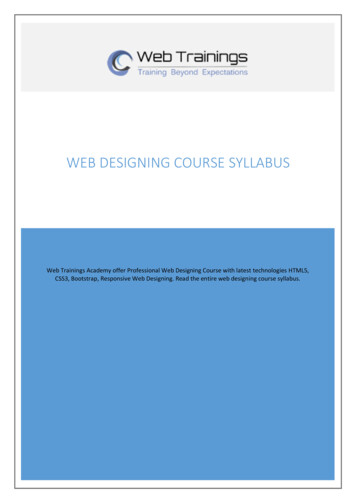

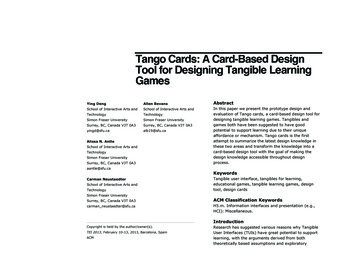
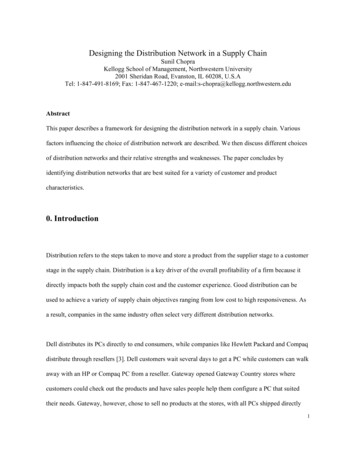
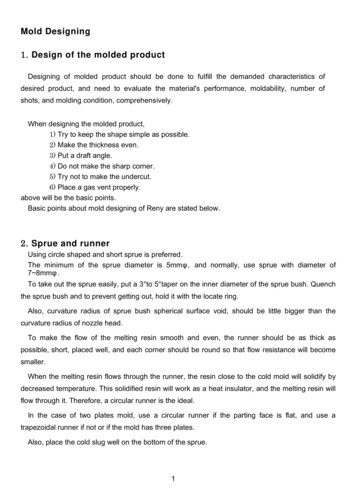
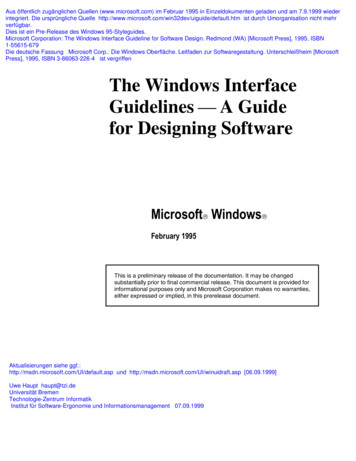
![[Page 1 – front cover] [Show cover CLEAN GET- AWAY 978-1 .](/img/13/9781984892973-6648.jpg)
